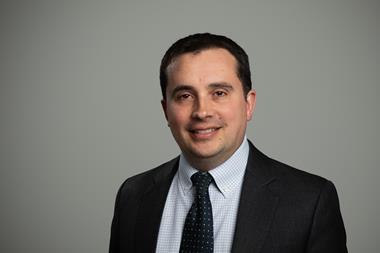It was back in 1995 – August 21 to be precise – that Esso launched trials of its new Pricewatch campaign in Tyne Tees and Central Scotland. It caused an absolute storm, sparking price wars and retail hardship the like of which had never been seen before, with its promise of matching the lowest prices within a two-mile radius of participating Esso sites.
‘Pricewatch or Doomwatch’ ran the headlines as flabbergasted retailers in those areas struggled for air in their shock at the situation, and in their haste to warn others of the impending doom. They shuddered at the thought that this could be rolled out as a national scheme.
The then PRA director Bruce Petter said the situation could only end in tears, and was the sign of a company desperate to buy back market share. “It is an out and out price war, and there will be people casualties, particularly among the smaller retailers and oil companies,” he exclaimed.
Normal prices were around 54ppl, but prices in the trial areas began to plummet to less than 49ppl. “How is the oil company going to deliver and make a profit – not to mention the retailers?” continued Petter. “They need 2ppl margin just to break even.”
The background to these events had been that in 1995 there were 16,000 service stations and supermarkets had been cutting a swathe through the oil companies’ market share, having snaffled an amazing 20 per cent from right under their noses within about five years of entering the market with their price-cutting strategies.
Esso was the first oil company to finally sit up and take them seriously with its trial of Pricewatch, which it described as a research project into its long-term business strategy. Research had suggested customers were more price sensitive and that’s what it wanted to test.
“Our market share has declined from 20 per cent to around 16 per cent in the past 10 years and we want to ensure we remain market leader,” said Peter Szanto, Esso’s retail planning manager at the time. When questioned about the cost he said: “While there is no budget on the support of the
trials, we don’t view this as a cost so much as an investment in our future and that of our retailers – and they’re not complaining.”
Bernie Holloway, Esso’s general sales manager for the north, sought to explain the company’s stance, and rebuff accusations that it had been responsible for triggering an intense price war and destabilising the market in the trial areas. “We have only brought our prices down to match the lowest in the market – whoever that maybe,” he said. “We are never leading prices down, we are always following.”
While Esso was admired in some quarters for its stand against the supermarkets, what was much harder to swallow was the fate of independent operators caught in the crossfire as the industry giants fought it out.
Independent retailer Phil Richardson, who runs the Park Road Garage Group, said Esso’s campaign was irresponsible and that small retailers were like
sacrificial lambs with no chance to fight back. “I can’t compete at these prices and will be forced to cut back on staff and even close sites if it continues,” he said.
Petter spoke out in similar vein: “Esso is confusing the target. Its retailers have been briefed to have a go at the hypermarkets, but the exercise is also threatening the likes of BP and Shell and retailers can’t compete.” He fired off letters to Esso and the Office of Fair Trading to discuss the notion of predatory pricing. “While Esso is quite within its rights in what it is doing, the fact retail prices have sunk to below cost is worthy of note, and maybe an abuse of power,” he railed. “The authorities ought to be aware that if the scheme goes nationwide, a lot of retailers will go out of business, and a lot of jobs will be lost, as will service to the public.”
How right he was. This was to be the shape of things to come. The four-month Pricewatch trials were hailed a big success by Esso, and on January 17, 1996, the campaign was rolled out nationwide, with the wording that it would be ‘among the lowest’ prices. “This is not a short term offer,” said Bernie Holloway. “This is a fundamental long-term shift in our pricing policy and it is here to stay.” As regards the danger of putting independents out of business he replied: “We supply more independent dealers – and more rural dealers – than anyone else and we’re actually trying to help them stay in business. There will be casualties – there always have been – but we aim to provide a package that gives retailers the maximum chance of surviving and prospering in a very difficult environment.”
The roll-out of Pricewatch came as a body blow to many retailers around the country although a straw poll of Esso retailers at the time showed they were grateful to the oil giant for its support. One Esso licensee said the Pricewatch scheme had been tremendous for bringing in business and he claimed fuel sales were up by as much as 35 per cent. “Esso couldn’t possibly give any more support than they are currently giving,” he said.
The response to the nationwide rollout of Pricewatch was immediate. Shell, BP and Total all responded with their own marketing and price-cutting strategies. Black Country petrol retailers, Richardsons Rugeley, slashed 75 per cent off fuel prices in a bid to challenge the oil majors and champion the cause of independent retailers. The OFT said Esso was not being predatory and did nothing. It was the start of years of instability with intense price wars and plummeting margins. Since then another 5,000 sites have bitten the dust, and steady fuel prices are regarded like a sleeping tiger – not to be trusted.

































No comments yet